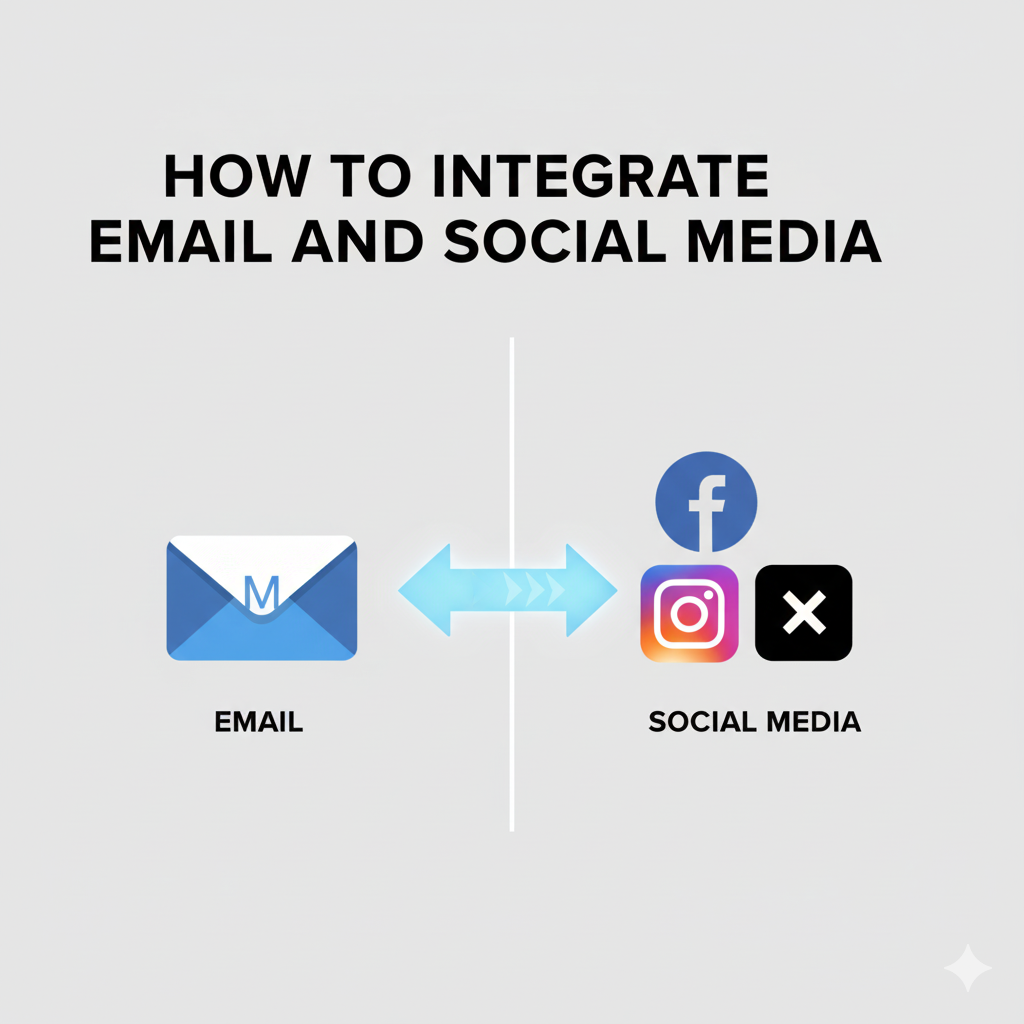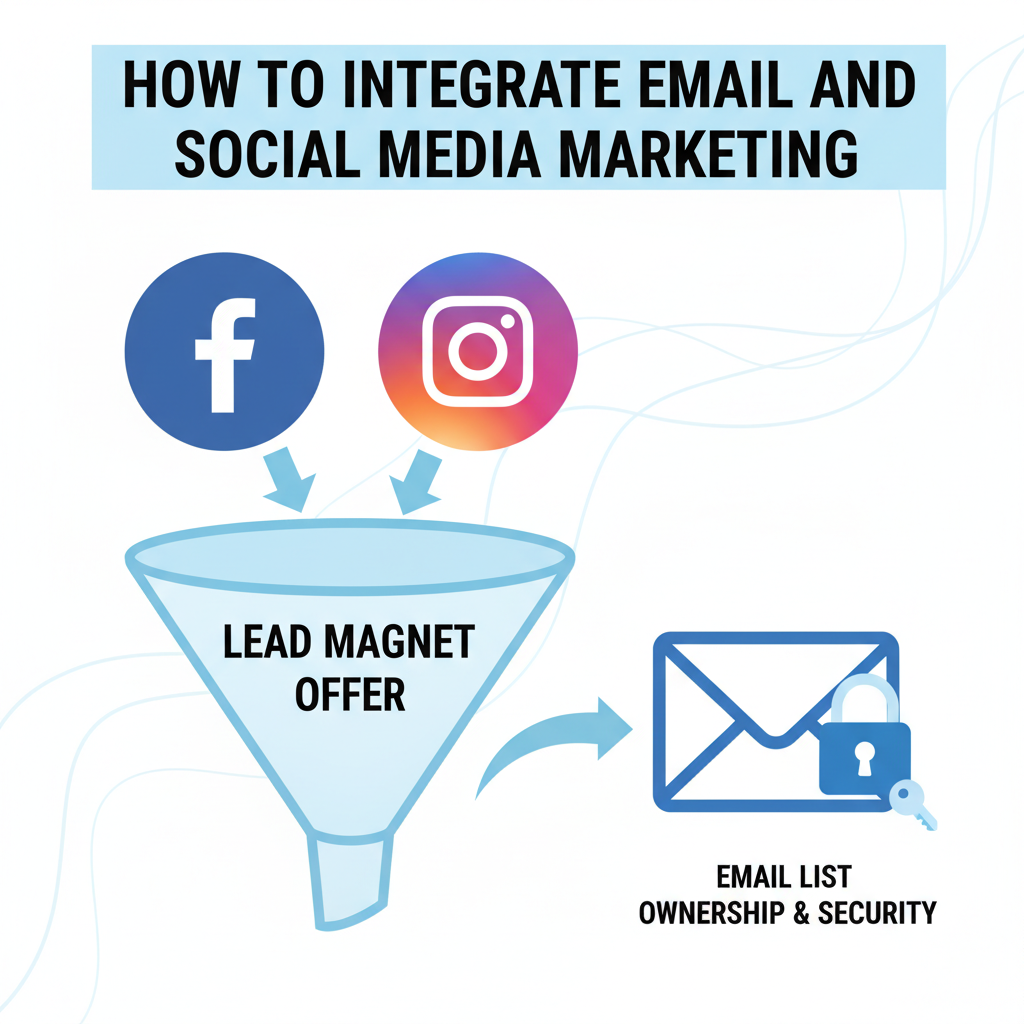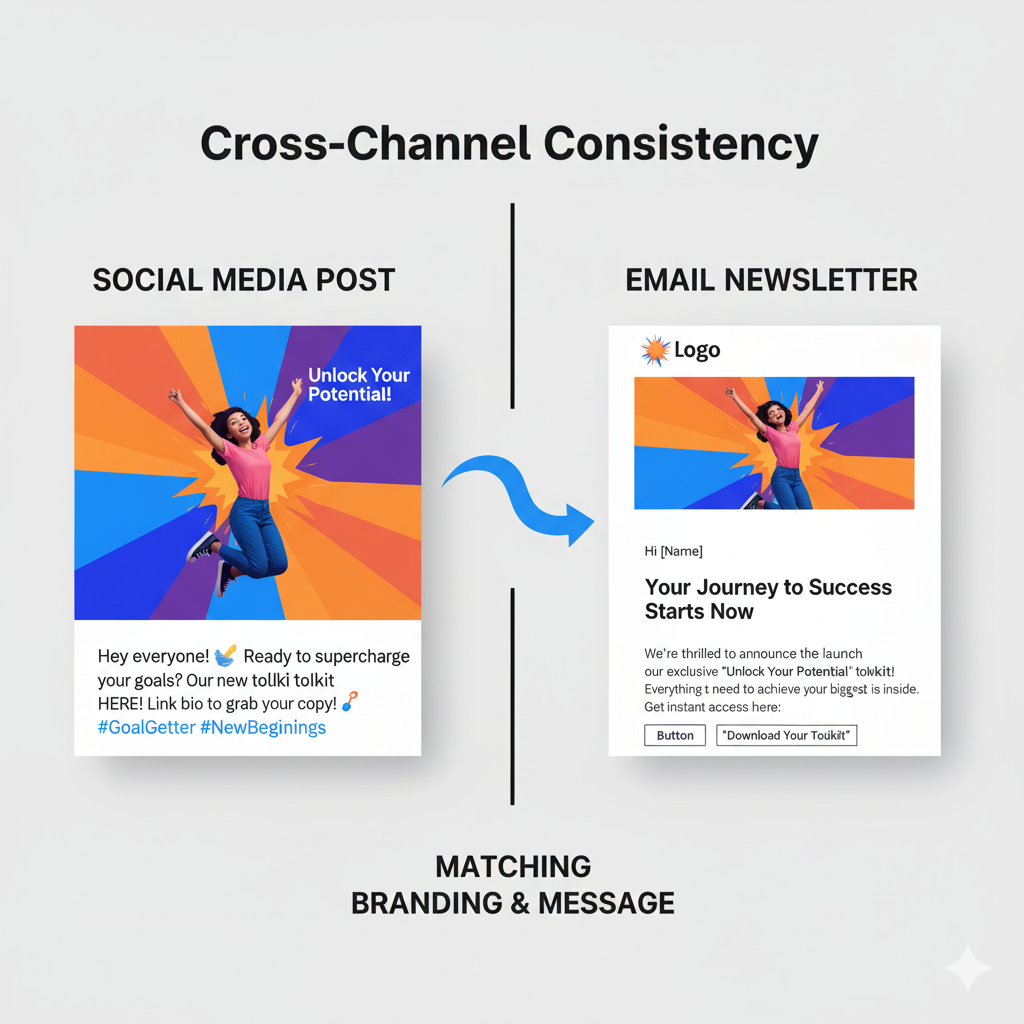
Contents
- 1 How To Integrate Email And Social Media Marketing for Maximum Cross-Channel Growth
How To Integrate Email And Social Media Marketing for Maximum Cross-Channel Growth
Introduction:
Email and social media are often treated like rivals, but they are a powerful partnership. Your followers on social media are your top prospects, but you don’t own that audience. Your email list is the audience you do own.
The key to cross-channel marketing is using each platform’s strength to fuel the other. Social media (Facebook, Instagram, TikTok) provides reach and discovery, while email provides conversion and reliable retention.
This guide breaks down exactly How To Integrate Email And Social Media Marketing using five actionable strategies that are simple to implement, even if you’re a novice.
Part 1: Strategy Focus: Social to Email (Acquisition)
The goal of this strategy is to convert your temporary, borrowed social media audience into permanent email subscribers.
1. Optimize Your Bio Link (The Funnel)
Never link your social media bio directly to your general homepage. This is a missed conversion opportunity.
- The Tactic: Link your bio (Instagram, TikTok) to a dedicated Landing Page that offers your best Lead Magnet (e.g., your “Free SEO Checklist”). The direct path from a curious click to a valuable free offer works best.
- The Why: You are creating a direct conversion funnel, ensuring every visitor has one clear call-to-action (CTA): sign up.
2. Run Simple Lead Generation Ads
You don’t need a massive budget to use targeted ads for list building.
- The Tactic: Use Lead Generation Ads on platforms like Facebook or LinkedIn. These ads allow the user to submit their name and email directly within the app. They don’t have to visit your website, which lowers the friction and increases conversion rates dramatically.
- The Why: Lower friction equals more leads. You get the contact information instantly, and your automation tool immediately starts the Welcome Sequence.
3. Use Contests and Giveaways
A contest is one of the fastest ways to generate buzz and a surge of new, relevant subscribers.
- The Tactic: Host a giveaway for a popular product. The only required entry action is to submit an email address on your dedicated contest landing page. Encourage entrants to share the contest on their feed for extra entries (viral loop).
- The Why: You incentivize signup with a large reward, turning casual followers into motivated participants.

Part 2: Strategy Focus: Email to Social (Engagement & Data)
This strategy uses the reliability of email to boost your social media engagement, which is often crucial for algorithms.
This is the simplest, non-negotiable step for cross-channel engagement.
- Follow Icons: Place social media icons (Instagram, Facebook, YouTube) prominently in the header and footer of every single email you send. Make them high-contrast and easy to click.
- Share Icons (SWYN): Include “Share with your Network” buttons in your most valuable emails (like your weekly newsletter). If a subscriber loves your content, they can share it with one click, driving new leads back to your sign-up page.
2. Target Unsubscribers and Inactive Subscribers
Don’t let a relationship end entirely when a subscriber clicks “unsubscribe.”
- The Tactic: When a user unsubscribes, the final “Goodbye” or thank-you page should offer a last-ditch option: “Don’t want emails? No problem! Follow us on Instagram for daily tips instead.”
- The Why: This converts a lost email lead into a persistent social follower, ensuring they still see your content and keeping the door open for future re-engagement.
3. Retarget Email Subscribers with Social Ads (Audience Match)
This advanced tactic is how businesses ensure consistency across the entire customer journey.
- The Tactic: Upload your segmented email list (e.g., “Customers who haven’t purchased in 90 days”) to platforms like Facebook, Google, or TikTok. These platforms match the email addresses to user profiles. You can then run a targeted ad campaign only to this segment (e.g., an ad saying, “We miss you! Here’s 15% off”).
- The Why: It ensures your message is consistent. If a customer is getting a sales email, the corresponding ad they see on social media should reinforce the same offer, creating a powerful, unified brand presence.

⚡ Quick-Answer Summary: Integration Strategies
Question: What is the single most important action for integrating email and social media?
Answer: Audience Conversion. Use every social media interaction (bio link, ad click, contest entry) to drive the follower to a dedicated email sign-up page. The goal is to move the lead from the platform you don’t own (social media) to the channel you control (your email list).
Part 3: Foundational Principles and Tools
Consistency is Key (The Brand Voice)
Cross-channel marketing requires a single, unified brand message.
- The Rule: Ensure your email subject lines, your social media captions, and your website copy all use the same tone, terminology, and visual style. If your brand is fun and casual on Instagram, your emails shouldn’t sound like a lawyer’s letter.
Tools for Seamless Integration
The best tools make this process automatic:
- MailerLite / Klaviyo: Automatically syncs new sign-ups from native forms directly into your lists and triggers the welcome sequence.
- HubSpot / ActiveCampaign: Provides deep integration between your marketing data (email opens) and your social ad targeting, enabling you to run retargeting campaigns without manually exporting lists.
❓ Part 4: Frequently Asked Questions (FAQ)
Q: What is the key difference between email and social media marketing?
A: The key difference is ownership. Social media provides borrowed reach and relies on algorithms for visibility. Email provides owned reach, where you control the message and the delivery, making it the superior channel for conversion and retention.
Q: What are Lead Generation Ads?
A: Lead Generation Ads are a type of paid social media advertising (common on platforms like Facebook and LinkedIn) that captures a user’s contact information directly within the social media app. This eliminates the need for the user to visit your website, which lowers the friction and boosts sign-up rates.
Q: Should I add my site menu to my social media bio link?
A: No. You should link your bio directly to your best-performing landing page or lead magnet. Linking to a broad site menu gives your audience too many options, distracting them from the primary goal of subscribing.
Conclusion
How To Integrate Email And Social Media Marketing successfully means embracing a single cross-channel strategy. Use social media to cast a wide net and capture leads, and use email to build loyalty, nurture sales, and measure profitability. By linking these two powerful forces, you gain both maximum reach and maximum retention.